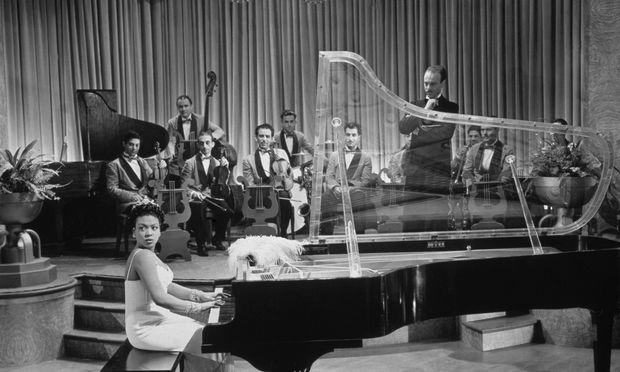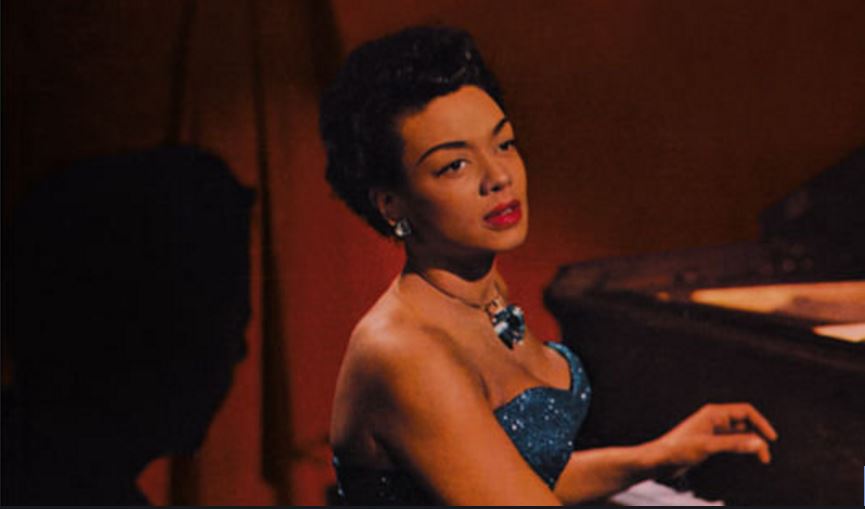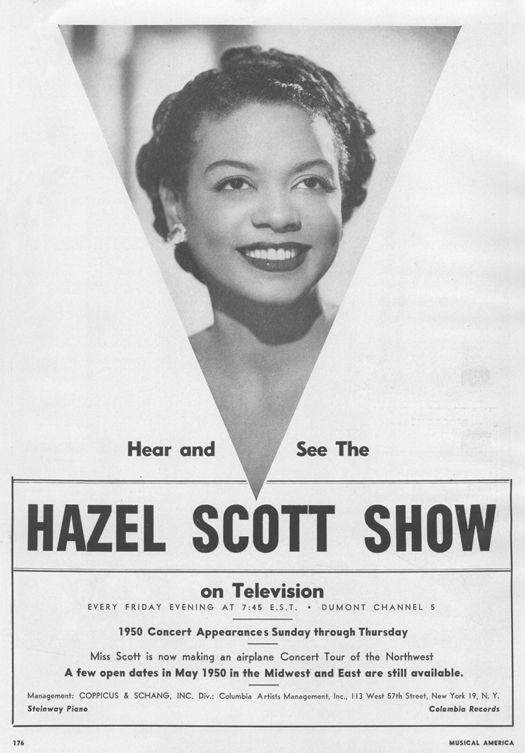Blog Archive
All the Right Notes: A History of Hazel Scott

Hazel Scott poised, as always behind a piano. Photo courtesy of WQXR.
In honor of Black History Month, we are paying tribute to Hazel Scott, one of the most talented pianists of the 20th century. An immigrant, born on the Caribbean island of Trinidad, Hazel moved with her mother and grandmother at the age of three to meet her destiny in New York. Though born abroad, Hazel’s talent, resolve, and dignity led her to break through the barriers of expectation for a woman of color in the United States.
Hazel Scott was born in Port of Spain, Trinidad on June 11, 1920. Her father was R. Thomas Scott, a West African scholar from Liverpool, England. Her mother, Alma, was a classically trained pianist and worked as a music teacher in Trinidad. Hazel’s genius was obvious by the time she was 2 or 3 when she began playing “Gentle Jesus,” the hymn her grandmother sang to her at nap time, by ear on the piano. Once the extent of Hazel’s inherent talent was clear, it became obvious that the reason she had been shouting during her mother’s music lessons, was when the students hit the wrong notes. The child truly had a sensitive ear. (Hazel’s mother, realizing her daughter’s talent, gave up teaching to focus solely on teaching Hazel). Soon thereafter, Alma and R. Thomas Scott’s marriage dissolved, and Alma, Hazel, and Hazel’s grandmother moved to New York. Alma had dreams herself of becoming a concert pianist but gave them up to help care for her daughter.
The beginning of the Scott’s immigration tale is as tough as any we’ve heard here at the Tenement Museum. After being a respected music teacher in Trinidad instructing students in her own home Alma took up work as a domestic maid to get by. But Alma soon taught herself to play the saxophone and by the early 1930s had joined Lil Hardin Armstrong’s band. Hazel acknowledged the strength and influence of her amazing mother and grandmother saying of her mother, “she was the biggest influence on my life.” Alma’s music world ties soon brought jazz and musicians into their lives, and Hazel was advised and tutored by the likes of Fats Waller.
In 1928, by the time Hazel was eight years old, Alma arranged for her to audition at the prestigious Julliard School. The rules were strident; no student was allowed to audition until he or she was 16 years old, but with some persuasion from Alma and the influence of some powerful friends, the audition was permitted. Hazel auditioned with Rachmaninoff and because her hand span was so small, she did have to “paraphrase” some of the master’s notes. A passing teacher heard the edit and was outraged only to find that the fingers behind the indignity were in fact the prematurely distinguished digits of an eight year old. The audition was an outstanding success, and staff professor Oscar Wagner, with the permission of the school’s director, offered her a special scholarship and private schooling.
By the time she was in high school Hazel was hosting a radio show and playing regular gigs. She admitted that along with appreciation came a lot of pressure. There were she has said sometimes “when I thought that I just couldn’t go on.” But perhaps with the help of the resolve of her mother, Hazel maintained a renowned grace, charm and conviviality, and she graduated high school with honors. In quick succession she was in her first Broadway production and then produced her first record Bach to Boogie, which broke national sales records.

Hazel Scott in living color. Photo courtesy of NPR.
Secure in her identity and in her fame, Hazel set important stipulations into all of her performance contracts, the most important of which perhaps was that she would never perform before a segregated audience. Hazel felt it fundamentally contradictory that a person would come to see her at a performance and wouldn’t be willing to sit next to a person who looked the way she did.
Hazel’s resolve for equality didn’t stop at segregation. When Hollywood directors and agents began to approach her, she delivered equally strident demands for her future characters. None of the women she played would ever wear a maid’s uniform or wear the rags of a destitute or homeless person. Hollywood honored her requirements and though she eventually left the movies, it was because she was too strong a personality. She never backed down from her insistence on respect.
Hazel married Adam Clayton Powell Jr., the first man of color to become a congressman on the East Coast. They were the ultimate power couple and historians are careful to insist that their notoriety was not limited to the black community.
Because of her strong ties to Café Society, a venue said to be a communist meeting place, the House Un-American Activities Committee investigated her. Resolute as always, Hazel had no problem disproving their accusations, but the slander was enough to block her syndicated television program, and she had a hard time recovering her reputation.
The Powells were a talented and influential couple in many circles. Eventually their marriage dissolved and Hazel moved with their son to Paris, where she joined a celestial community of expatriated black Americans including James Baldwin and Dizzy Gillespie.

A promotional poster for a Hazel Scott event. Image courtesy of the University of Michigan Press.
Hazel released Relaxed Piano Moods with Charlie Mingus and Max Roach in 1955, which is now considered to be one of the most important musical recordings of the 20th century. Though when Hazel returned to the United States, popular music had less of a place for the classical piano at which she so excelled., nonetheless her reputation remained as one of the most talented living players until her death in 1981.
Today we are pleased to celebrate Hazel’s original style, on the national stage and behind the keyboard.
–Posted By Julia Berick Marketing and Communications Coordinator